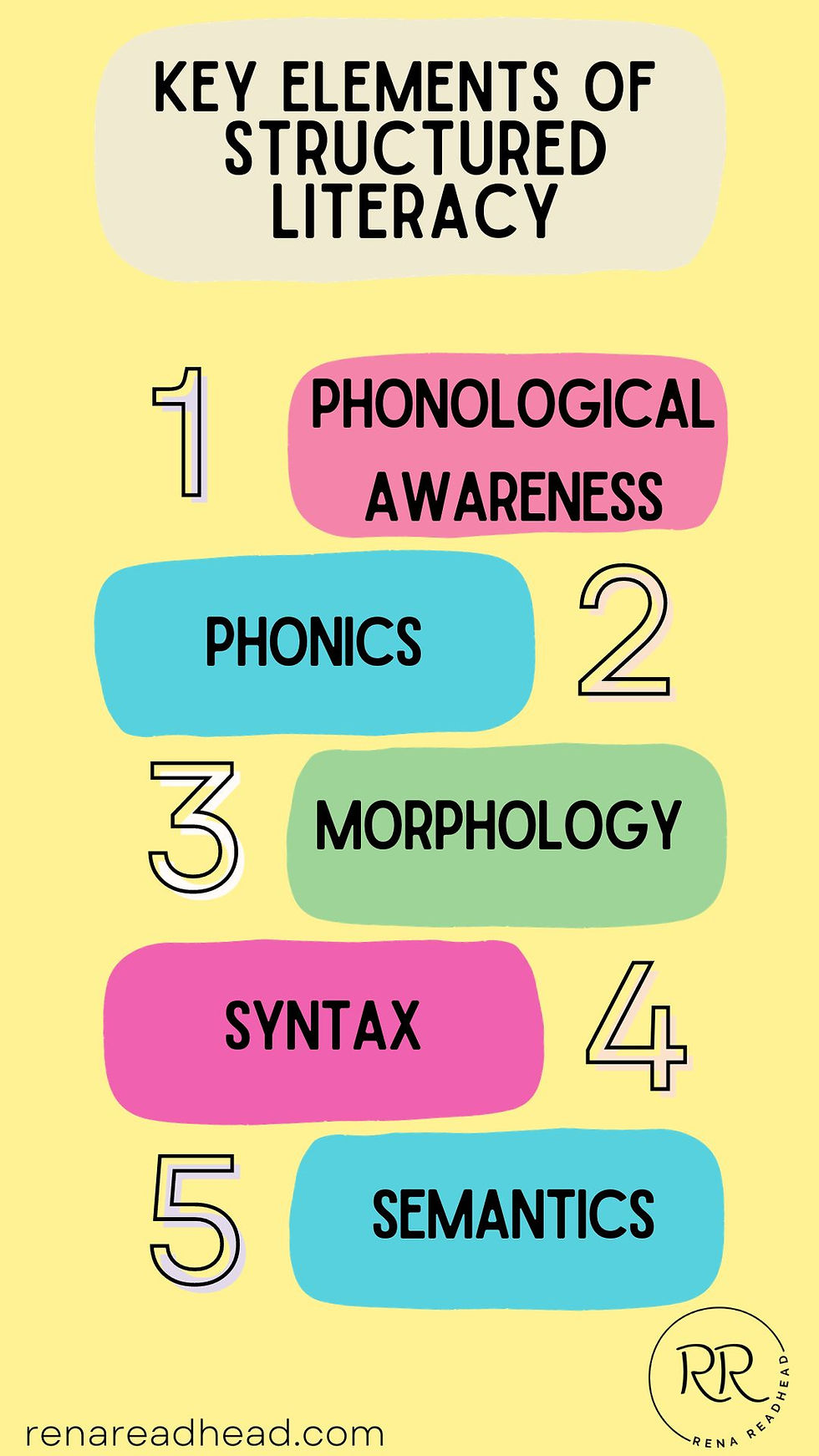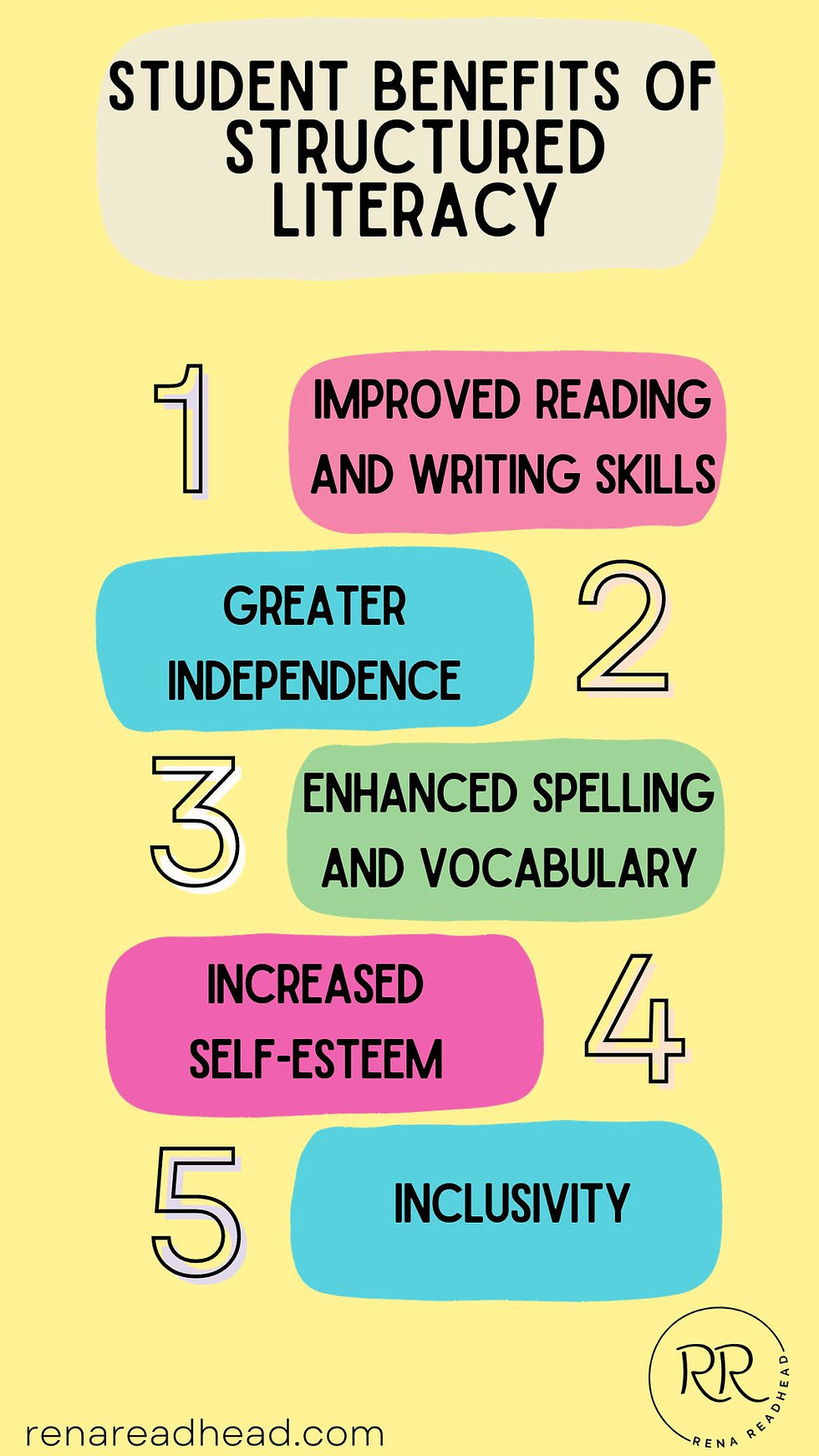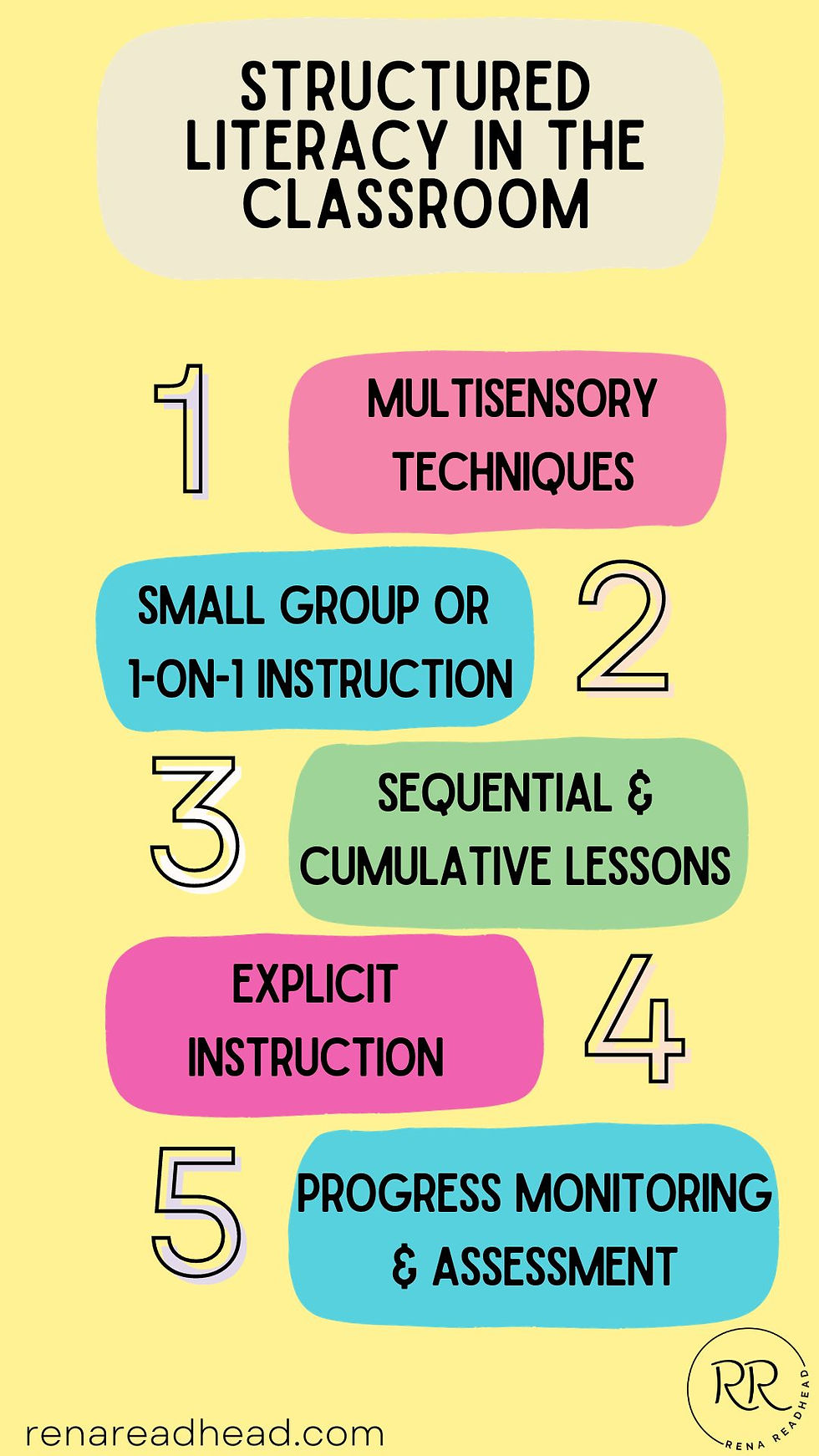
Structured literacy has garnered significant attention in recent years, and for good reason! Reading, as we all know, is a critical skill, and it is the aspiration of every parent and teacher to see their children become proficient and skilled readers. Unfortunately, data shows that this is not the outcome for many of our nation's students. Structured literacy, however, has emerged as a powerful approach to literacy instruction in the elementary classroom, offering the promise of nurturing proficient readers.
Structured literacy emphasizes the importance of systematic, evidence-based methods. This blog post outlines structured literacy, its elements, research it is grounded in, the benefits for students, and a glimpse of how it looks when implemented in the classroom.
This is the beginning of a small series of posts that will follow step-by-step how I implement structured literacy reading interventions in my own classroom, so stay tuned for more!
What is Structured Literacy?
Structured literacy is an evidence-based approach to teaching reading and writing. It is a systematic, cumulative, and explicit method that ensures students acquire a deep understanding of the language's structure, enabling them to become proficient readers and writers.
Structured literacy programs provide a well-defined sequence of instruction, encompassing phonology, phonics, morphology, syntax, and semantics. Unlike traditional methods, which might rely on memorization and sight words, structured literacy focuses on teaching the rules and patterns of the language.
Key Elements of Structured Literacy

Phonological Awareness: Structured literacy starts with developing a child's awareness of the sounds in words, including syllables, onset-rime, and phonemic awareness. This lays the foundation for understanding the relationships between letters and sounds.
Phonics: Students learn the relationships between written letters and the sounds they represent. Systematic phonics instruction is scaffolded, starting with basic concepts and progressing to more complex ones.
Morphology: Morphology involves teaching students the structure of words, including prefixes, suffixes, and root words. This helps them understand the meaning and spelling of words more effectively.
Syntax: Understanding sentence structure and grammar rules is essential for comprehension and writing. Structured literacy emphasizes the explicit teaching of syntax.
Semantics: Developing vocabulary and understanding word meanings are integral to structured literacy. It focuses on building a strong vocabulary foundation.
The Research Behind Structured Literacy
Structured literacy is rooted in extensive research in the fields of psychology, linguistics, and education. Prominent researchers like Dr. Louisa Moats and Dr. David Kilpatrick have contributed to the development and validation of structured literacy methods. I highly
recommend Kilpatrick's book, Essentials of Assessing, Preventing, and Overcoming Reading Difficulties.
This book was a complete game changer for me and is what started me down the rabbit hole of structured literacy (and it's what started my struggling readers on the path towards reading proficiency!) These approaches have been shown to be effective in helping struggling readers and students with dyslexia make significant gains in literacy skills.
Benefits for Students

Structured literacy has so many benefits for our students:
Improved Reading and Writing Skills: Structured literacy equips students with the tools needed to read and write with confidence and accuracy.
Greater Independence: Students become more independent learners, as they can decode words and comprehend texts more effectively.
Enhanced Spelling and Vocabulary: Understanding the structure of words improves spelling and vocabulary development.
Increased Self-Esteem: Success in reading and writing boosts a child's self-esteem and motivation to learn.
Inclusivity: Structured literacy is effective for all learners, including those with dyslexia and other learning differences. (This here is the biggest benefit, in my opinion! So many other methods for teaching reading are only effective for a small percentage of students. Structured literacy, on the other hand, reaches all students).
Often times structured literacy is discussed within the context of students with dyslexia. One year I had a class of 28 students. Only 2 students were just at grade level. The other 26 were well-below grade level in reading. Not one child had a dyslexia diagnosis. However, I began Orton Gillingham reading interventions (a structured literacy intervention approach) and saw significant growth with every child. Structured literacy supports all students.
What Structured Literacy Looks Like in the Classroom

In a structured literacy classroom, you will often see:
Multisensory Techniques: Teachers use various sensory modalities, such as visual, auditory, and kinesthetic, to reinforce learning.
Small Group or One-on-One Instruction: Teachers work closely with students, tailoring instruction to their specific needs. (check out these small group posts for more support! -Managing small groups; -managing the rest of the class during small groups; -determining small group size)
Sequential and Cumulative Lessons: Lessons build upon previous knowledge and systematically progress.
Explicit Instruction: Teachers explicitly teach language structure, rules, and patterns.
Assessment and Progress Monitoring: Regular assessments are used to track students' progress and adjust instruction accordingly.
Structured literacy is an evidence-based approach that provides a solid foundation for elementary students' reading and writing skills. Its structured, sequential, and systematic nature makes it effective for all learners, especially those who struggle with literacy. Grounded in extensive research, structured literacy has become a powerful tool in the arsenal of educators, equipping students with the skills they need for lifelong success in literacy and beyond.
For more information, check out the other posts in the Structured Literacy Series!


Comments